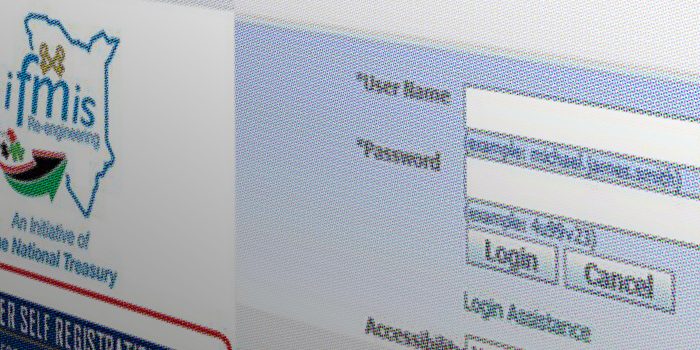Community Participation as a Procurement Method
May involve either direct community participation or organized community participation through the appointment of community based service providers.

Community Participation method of procurement highly differs from the rest of the methods that work on a core premise of competitive bidding through the process. Other methods such as Electronic Reverse Auction, Framework Agreements, Restricted Tenders, Design Competitions and RFQs have an almost ‘winner takes all’ approach where the bidders compete against each other and the awarded winner is then expected to deliver the project and pitched.
According to the PPAD (2020) Regulations, a public procuring entity may involve the beneficiary community to participate in the delivery of works/services if the project provides value for money, gives a better assurance fo the project’s sustainability and enhances the socio-economic objectives of the government. The Community Participation method appears to put ‘the greater good’ above such competition. So, how exactly does this work?
Here’s what the Procurement Laws say about Community Participation
The use of Community Participation as a procurement method by public entities is articulated within The Public Procurement And Asset Disposal Regulations, 2020 under Sections 108 – 110, as outlined below:
108. Community participation
- Pursuant to section 92 (m) of the Act, a
- Community participation method may in procuring entity may involve a beneficiary community to participate in the delivery of services if it is established that it shall contribute to –
- the economy;
- value for money;
- project sustainability; and
- socio-economic objectives such as creation of employment.
It shall involve two approaches, namely –
- direct community participation; or
- organized community participation through the appointment of community-based service providers.
Generally, the method of Community Participation as a procurement method is governed by the following pre-defined conditions:
109. Conditions for use of community participation method
- Where a procuring entity intends to use community participation as a method of procurement that the procuring entity shall ensure —
- the project is aligned to the procuring entity’s mandate and strategic plan;
- the project has positive socio-economic outcomes with the community as its main beneficiary;
- the project requires community involvement in part or in whole for its success and its continued implementation;
- the project is included in the annual procurement plan for that procuring entity;
- the project proposal prepared is in line with its strategic plan and which shall include —
- setting out the key result areas and the specific roles of the target community; and
- the objectives, estimated budget and the target community beneficiaries.
Further, the law outlines a step by step process of how this procurement method is supposed to be undertaken by government/public entities who would wish to utilize it. The steps are as follows:
110. Procedure for use of community participation method
- Where the procuring entity uses community participation procurement method for delivery of services that procuring entity shall —
- organize a meeting of the beneficiary community, whereby—
- the community shall be informed of the activity, the scope of their participation and the benefit to the community in return;
- through its representatives, the procuring entity shall explain to the community the document containing obligations of both sides, the appropriate payment, the period after which participants shall be paid, payment modalities and any other details related to goods, works or non-consultancy services execution; and
- the procuring entity shall establish a list of community members committed to participate in the procurement proceedings and those members shall affix their signatures or fingerprints as evidence for their commitment;
- require the community to elect or nominate their representative in all communication and transaction processes and that procuring entity shall identify a contact person and where there is a change to the representatives each party shall communicate the change to the other;
- avail technical equipment needed for the execution and shall inform the community of any equipment they shall bring for the execution of the community project, where applicable;
- use its public officers or hire a consultant to technically assist the community for the supervision of works execution, if needed;
- with the help of supervisors, assist every participant to sign on daily basis in the register or on a card prepared for that purpose, as appropriate;
- before execution of the community project, require every participant to provide his or her full identification, and if necessary, her or his bank account where the payment may be deposited;
- where a procuring entity is unable to organize the community participation, delegate to another public entity capable of managing that activity; and
- ensure that a project management committee composed of at least five volunteer members is elected or nominated by the beneficiary community who shall—
- participate in the preparation, management and implementation of the project;
- monitor the implementation of the project; and
- report to the accounting officer of the procuring entity.
- organize a meeting of the beneficiary community, whereby—
The Maximum Level of Expenditure for Community Participation
Guided by the Second Schedule of the Public Procurement and Assets Disposal Regulations (2020), where the procurement method is Community Participation, the threshold matrix is provided as follows:
| Procurement Method – Framework agreement (section 114 of the Act) | ||
| Goods | Works | Services |
| Maximum Kshs 10,000.000.00 | Maximum Kshs 30,000.000.00 | Maximum Kshs 5,000.000.00 |
| No minimum | No minimum | No minimum |
Tell us about your Community Participation, if any…
Surprised to learn about this procurement method? No to worry, you are not alone. Based on the number of tenders published annually, Community Participation does not appear to be a popular means of procurement (locally, at least) – and this could be because of a myriad of reasons – but there is a clear provision for it within the Procurement Laws.
At the end of the day, Community Participation is still a very legal procurement process in Kenya and this is part of the reason why we felt it was important that we included it in this blog series for our users.
Have you ever come across this procurement method in use? Tell us more about it within the comment section.
This article is part of the Procurement Methods blog series.







